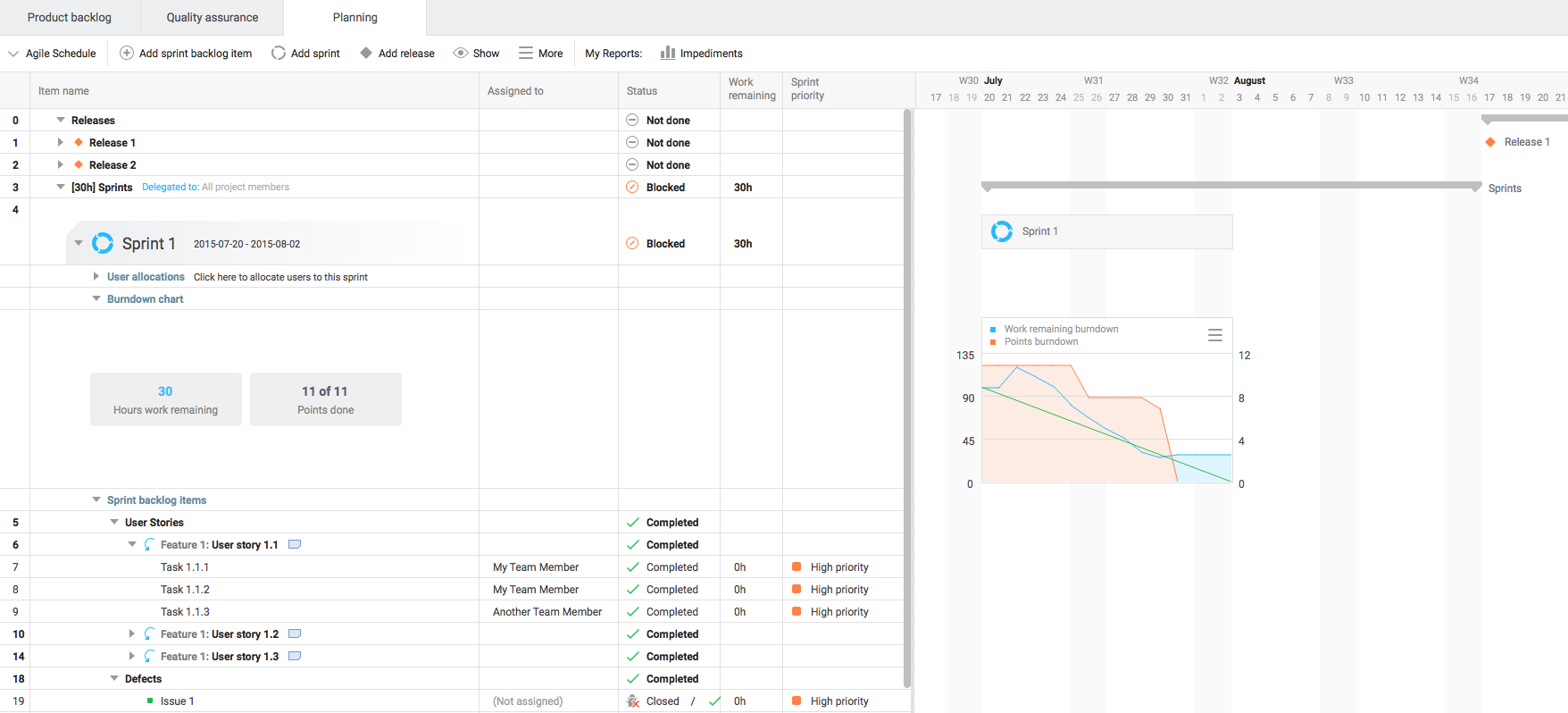In Agile projects, you either work directly in the schedule view, on a board, or in a prioritized view. In P4 Plan, you can work with Agile planning by using the Agile schedule view.

This view shows the schedule for the project, containing all sprints, releases, and items. You can also access the Board and Sprint priority views, which are specialized planning tools commonly used in agile planning.
The core components of an Agile project are as follows:
- Sprints with specific sprint members, users and burndown charts.
- Sprint backlog items
- Sprint tasks
- Releases/Milestones
- A separate product backlog with backlog items that can be committed to a sprint
- Columns such as Points and Priority, which your team needs to track their work. For more information, see Configuring project columns.